Identify and Attract an Allen’s Hummingbird
Updated: Nov. 21, 2023
Learn what a male, female and juvenile Allen's hummingbird looks like. Learn about their range, preferred habitat and migration.
Our editors and experts handpick every product we feature. We may earn a commission from your purchases.
Male and Female Allen’s Hummingbird Identification
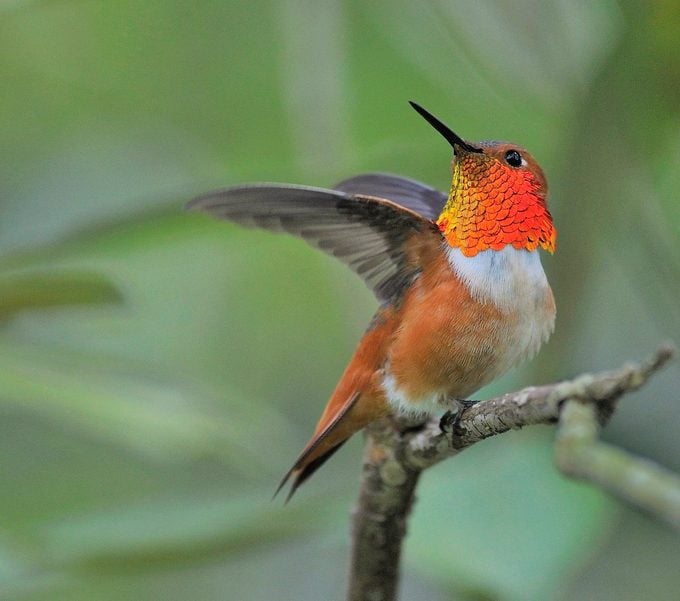
The male Allen’s hummingbird has warm rusty-orange flanks, breast band, face, neck, and tail, as well as a green back and crown. They often have a rusty-orange rump, and sometimes show rusty-orange at the nape. A brilliant metallic-orange gorget can appear bright orangish scarlet to deep coppery-green. Look for a clean white breast band or patch below the gorget.
The rufous hummingbird, another species of the West, is often confused for the Allen’s. As a general rule of thumb, if the male’s back is more green than orange, it’s an Allen’s.
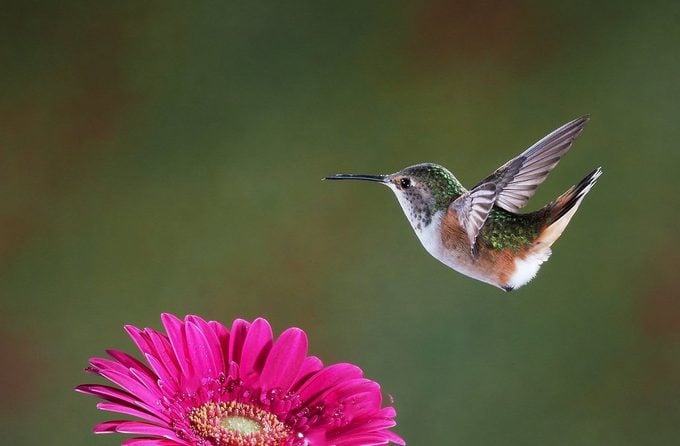
The female is green above, white below, with light rufous-orange flanks and rump. A narrow, easily overlooked orangish eyebrow stripe reliably separates a female Allen’s from the paler female broad-tailed hummingbird.
Juvenile Allen’s Hummingbird
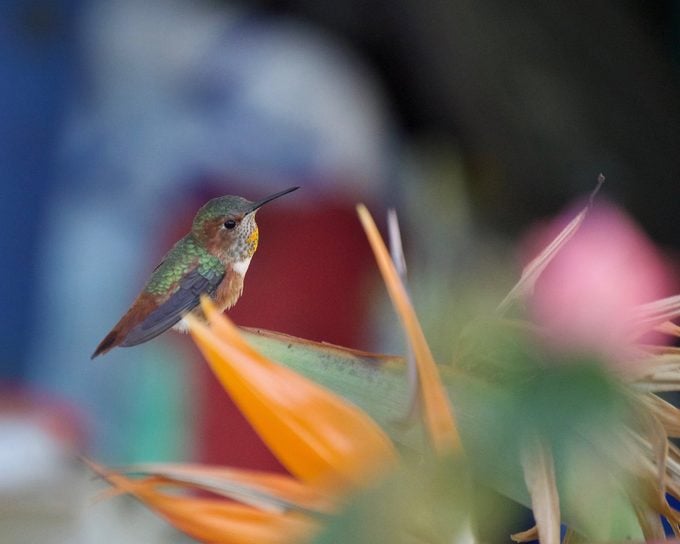
Young Allen’s look incredibly similar to females but are duller overall, and often scaled green on the back. Look closely at their throats—a tiny patch of red-orange feathers signifies a female.
Female and juvenile Allen’s and rufous hummingbirds are nearly indistinguishable from each other.
Learn how to identify a Costa’s hummingbird.
Attract Allen’s Hummingbirds to Your Yard
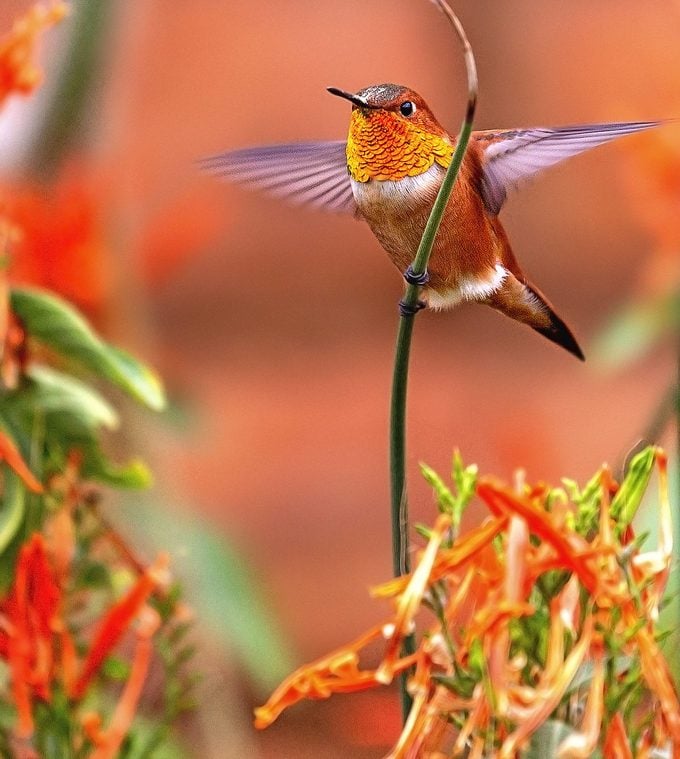
“If an Allen’s hummingbird really likes your yard, it will come back year after year. They are very site-specific,” says Barbara Monahan, whose property in Santa Cruz, California, was a banding site for 3,000 hummingbirds for the nonprofit Hummingbird Monitoring Network.
To attract these fliers, Barbara includes Grevillea lanigera, also called woolly grevillea, among her hummingbird-friendly plants. “The Allen’s bills are smaller, so the flowers can’t be too long. They can’t dig into a long trumpet vine,” she says.
Allen’s hummingbirds are particularly big fans of these nectar plants:
- Bush monkey flower
- Indian paintbrush
- Twinberry honeysuckle
- Western columbine
- Penstemon
Feeding Allen’s Hummingbirds
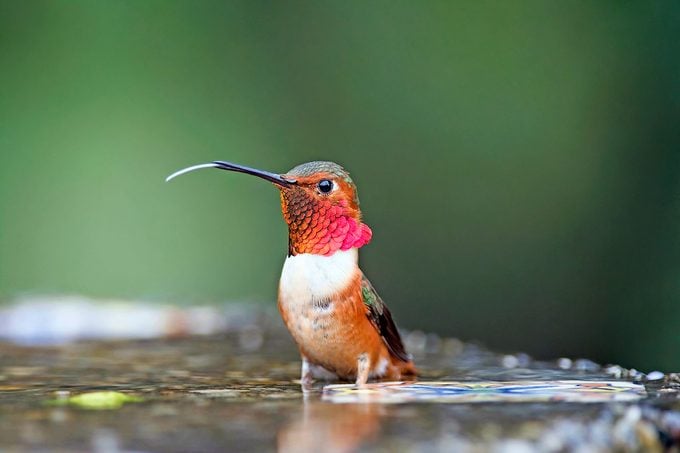
The usual hummingbird tricks draw in these birds, too. Set out a sugar-water feeder and a source of running water to see more of them. Barbara emphasizes having a few feeders in different locations because males are extremely territorial. These feisty winged Napoleons will chase away a hawk if it flies close to a favored food source or prospective mate.
Barbara places feeders in prime locations with sheltered perches nearby so these high-energy fliers can rest after feeding. She also sets out chunks of fruit to attract gnats, a dietary staple for hummingbirds. Allen’s also pluck bugs and spiders off spiderwebs, so “don’t be too aggressive cleaning your eaves,” Barbara says.
She also recommends a water dish that’s about 1 to 2 inches deep, is 12 to 20 inches wide, and has a constant drip source and a flat rock in it for an easy out. “Allen’s will skitter along the top of the water. Think water skiing!” says Barbara, who also sets up a mister during the summer. “Other birds like it, too.”
Why Is This Species Named Allen’s Hummingbird?
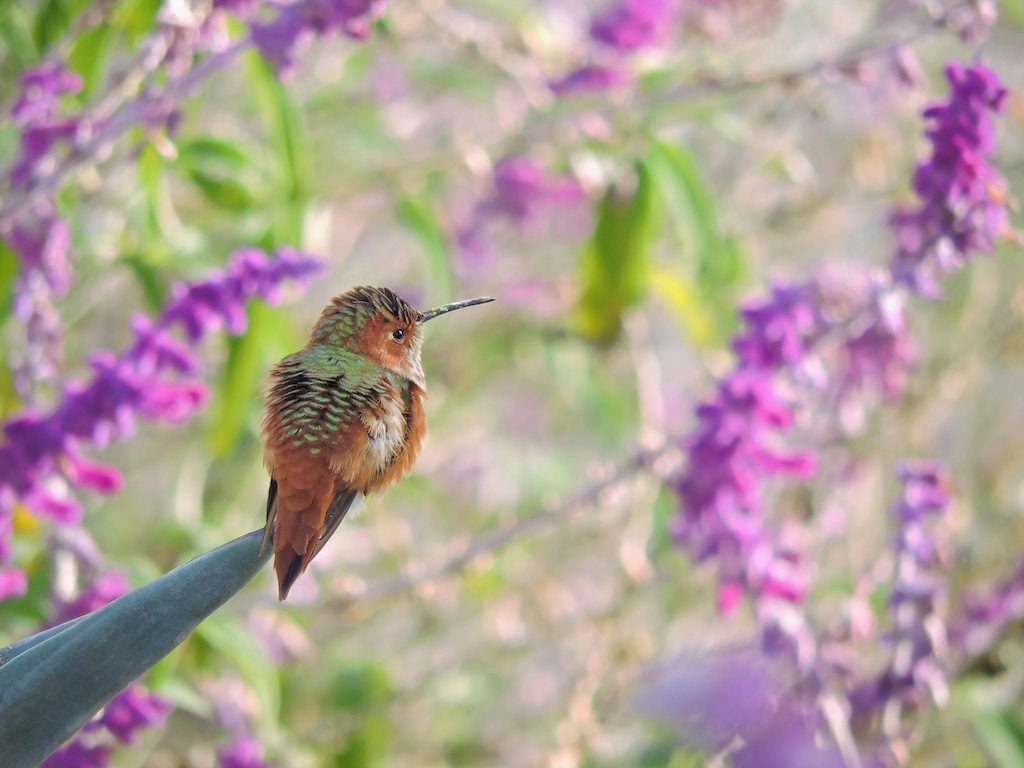
Named for Charles Andrew Allen, a California taxidermist, the bird was first classified in 1877. However, it may get a new name soon, as the American Ornithological Society recently announced it will be reclassifying all bird species currently named after people.
Discover 15 types of hummingbirds found in the United States.
Allen’s Hummingbird Call and Behavior
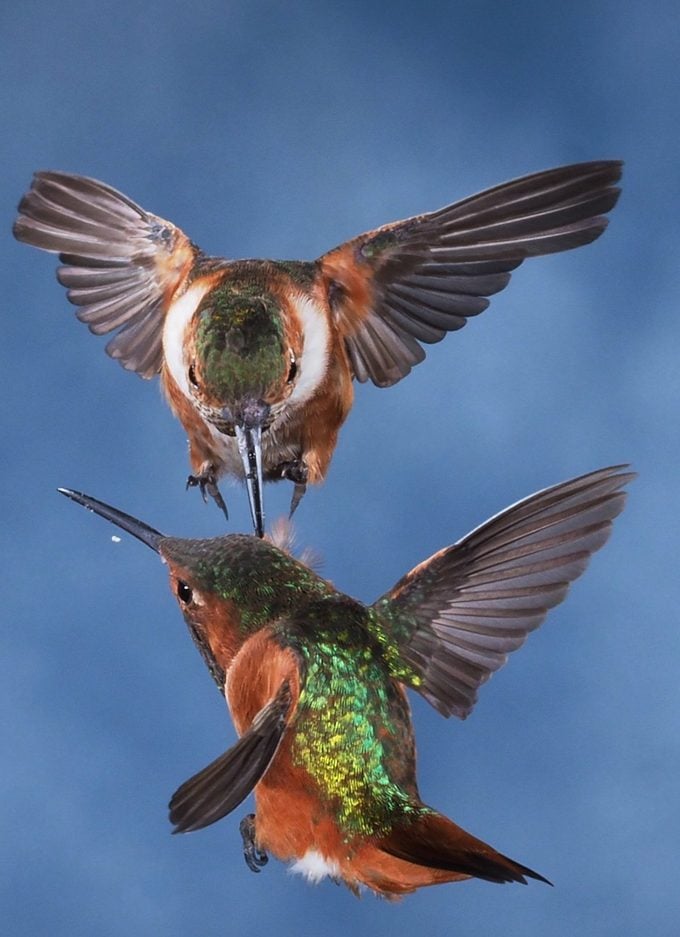
The male Allen’s hummingbird engages in a distinctive courtship display flight. To court females, males dive at a high speed while making a buzzing sound with their wing feathers or a shriek with their pointed tail feathers, then fly side to side.
The display begins with a series of pendulum flights in which he swings rapidly back and forth in a shallow arc, covering about 25 feet horizontally in each swing, uttering a buzzing note and ending each arc with a flare of the tail and a high-pitched rattle. These pendulum flights, five to 15 in a row, occur 6 to 8 feet or so above the female. Often the final arc transitions into a high-angled climb and then a high-speed plunge, culminating above the female.
In addition to the male’s courtship vocalizations, Allen’s hummers make a variety of calls similar to those of the rufous, including chip notes and aggressive rattling sounds used in confrontational situations.
Learn how to identify an Anna’s hummingbird.
Allen’s Hummingbird Nesting Habits
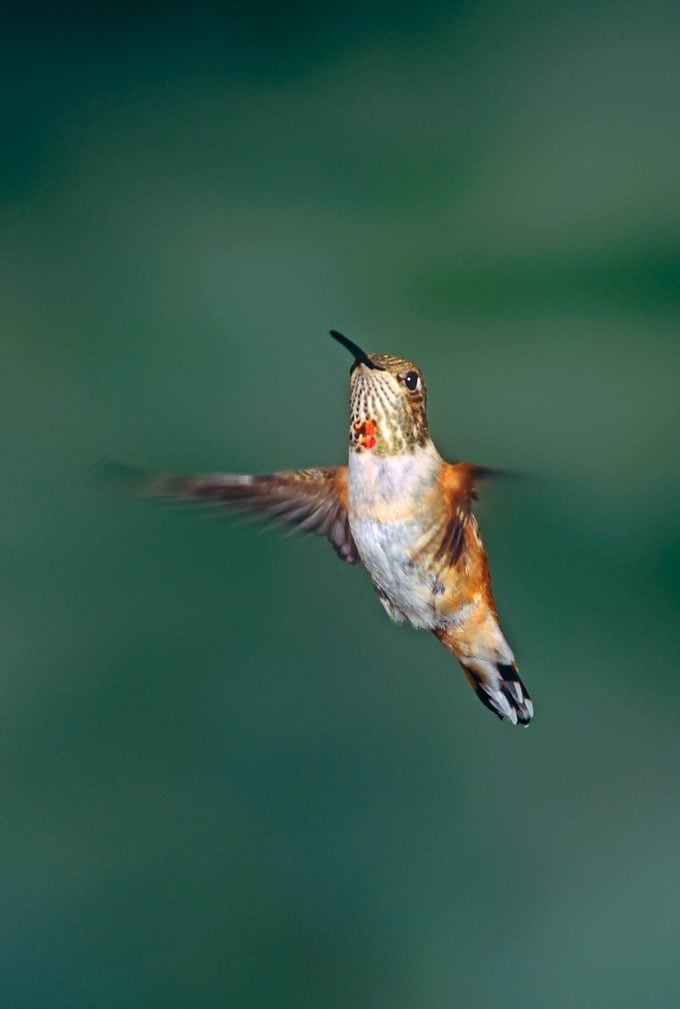
Males mate with multiple females, then a female builds her nest from plant fibers, lichens, moss, spider silk and animal hair. The nest stretches as her one or two chicks hatch and grow. She continues to feed them another week or two after they fledge.
Discover more jaw-dropping facts about hummingbirds.
Allen’s Hummingbird Habitat and Range
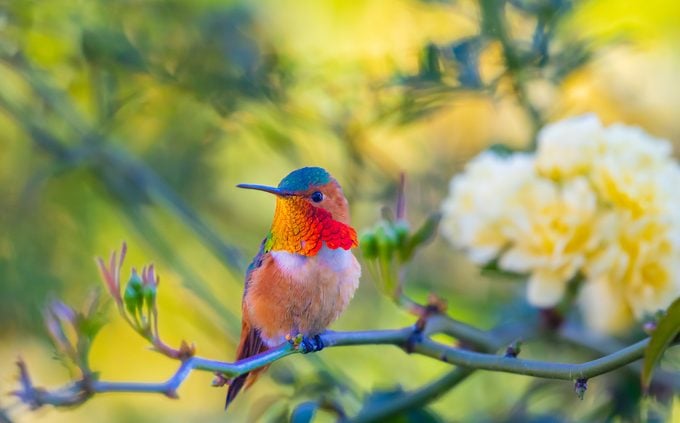
According to the Kaufman Field Guide to Birds of North America, the Allen’s is commonly found in coastal scrub land (chapparal), open woods and suburban areas along the Pacific coast. The Allen’s hummingbird breeds in summers from southern Oregon to San Diego County, California. This species is especially widespread from southern California to the Bay Area, becoming somewhat less common northward and as the distance from the coast increases.
During the breeding season, you’re more likely to spot male Allen’s near scrubby plants, but females seek out thicker cover once nesting.
Get expert tips on how to create an ideal hummingbird habitat.
Do Allen’s Hummingbirds Migrate?
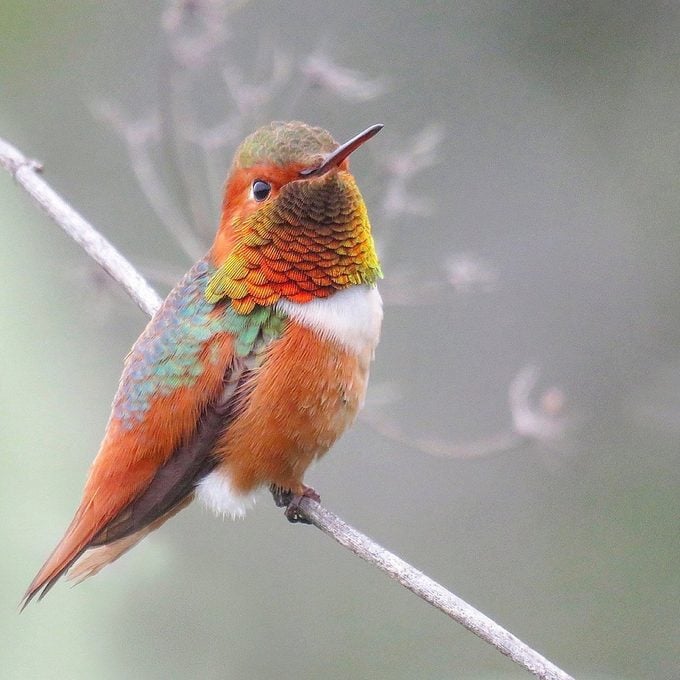
Allen’s make substantial twice-yearly journeys to and from their breeding grounds. These hummingbirds begin their spring migration very early. Moving north in Mexico by December, they reach coastal California and southern Oregon in late winter, as early as January or February.
Hummingbirds that live in northern latitudes routinely leave for the winter, migrating southward, mostly to Mexico. Fall migration begins in midsummer. By early August, most birds in southwestern Oregon and northwestern California have departed. However, Allen’s are year-round residents in southernmost coastal California, including on the Channel Islands and Palos Verdes Peninsula.
Sources:
- The Hummingbird Handbook: Everything You Need to Know About These Fascinating Birds, published by Timber Press
- Kaufman Field Guide to Birds of North America
- Cornell Lab of Ornithology
- National Audubon Society
- National Park Service
- Hummingbird Monitoring Network




















